Welcome to our blog, where we embark on a comprehensive exploration of hard drives. Often overshadowed by more attention-grabbing components, the hard drive is the beating heart of any computer system. It is the repository of all your invaluable data, including documents, photos, music, applications, and much more.
Within these pages, we shall delve into the intricate history of hard drives, tracing their evolution from room-filling giants to compact, pocket-sized powerhouses. We will unravel the technological marvels that underpin these devices, emphasise the significance of data recovery, and even catch a glimpse of the future of data storage.
Whether you are a tech enthusiast eager to expand your knowledge or a curious reader keen to comprehend the device safeguarding your digital existence, this blog is tailored to your interests.
The Evolutionary Journey of Hard Drives
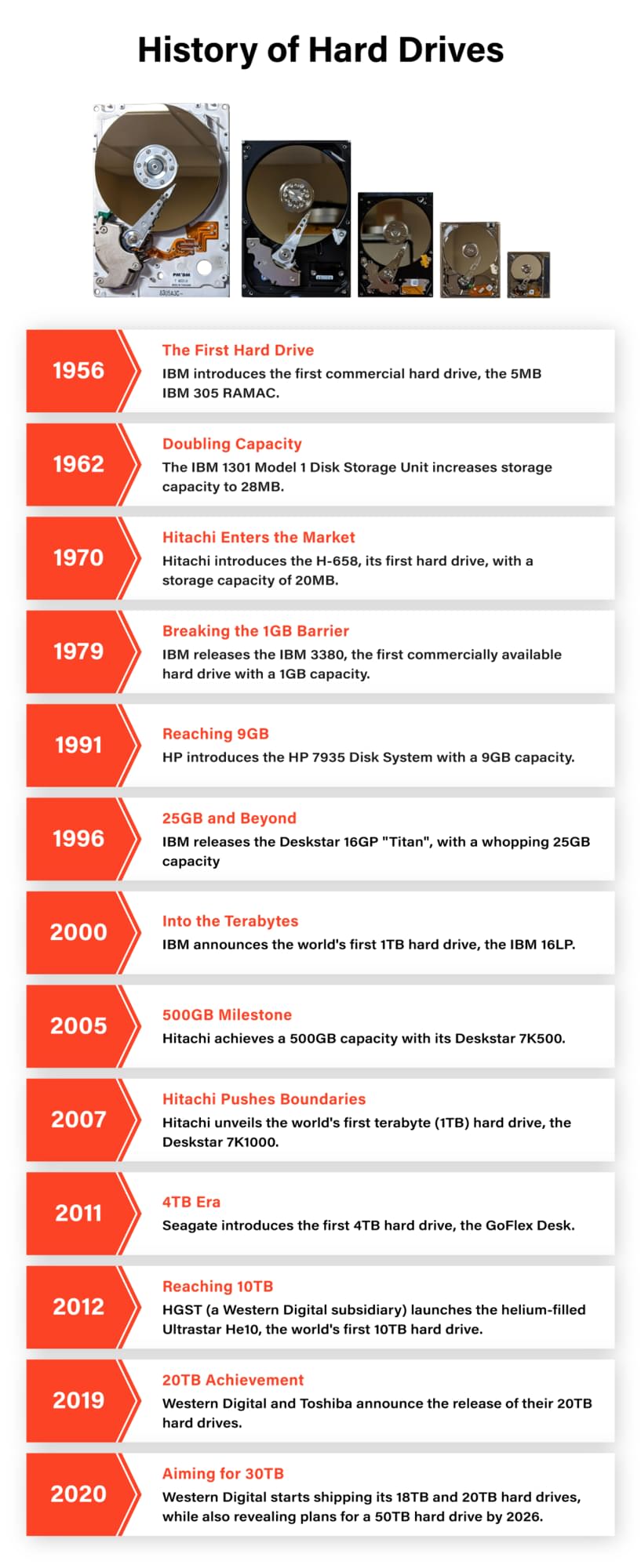
The hard drive, an integral component of contemporary computing, boasts a captivating history that spans over seven decades. Its transformation from room-filling storage to a compact, portable device serves as a testament to relentless technological progress.
The Genesis of Hard Drives: 1950s – 1960s
The odyssey commenced in 1956 when IBM unveiled the world’s inaugural hard drive, the IBM 350 Disk Storage Unit. A part of the IBM 305 RAMAC (Random Access Method of Accounting and Control) computer, this colossal hard drive equated in size to two refrigerators but could only house approximately 5MB of data across its fifty 24-inch platters.
In the ensuing decade, hard drives underwent a process of miniaturisation and enhanced efficiency. In 1961, IBM introduced the 1301 Disk Storage Unit, employing “flying heads” that maintained a hovering position just above the disk surface when not in use. This innovative approach significantly mitigated the risk of harm to both the disks and heads, thereby elevating reliability.
Miniaturization and Progression: 1970s – 1980s
The 1970s marked a period of intensified miniaturization and expanded storage capabilities. In 1973, IBM unveiled the 3340 “Winchester” hard drive, boasting a remarkable storage capacity of up to 70MB. This model introduced pivotal design innovations that would go on to define industry standards.
The 1980s experienced a surge in personal computing, with hard drives becoming a staple component. In 1980, Seagate Technology pioneered the creation of the first 5.25-inch hard disk, the ST-506, capable of storing 5MB of data. As the late 1980s approached, hard drives with the capacity to store hundreds of megabytes became commonplace.
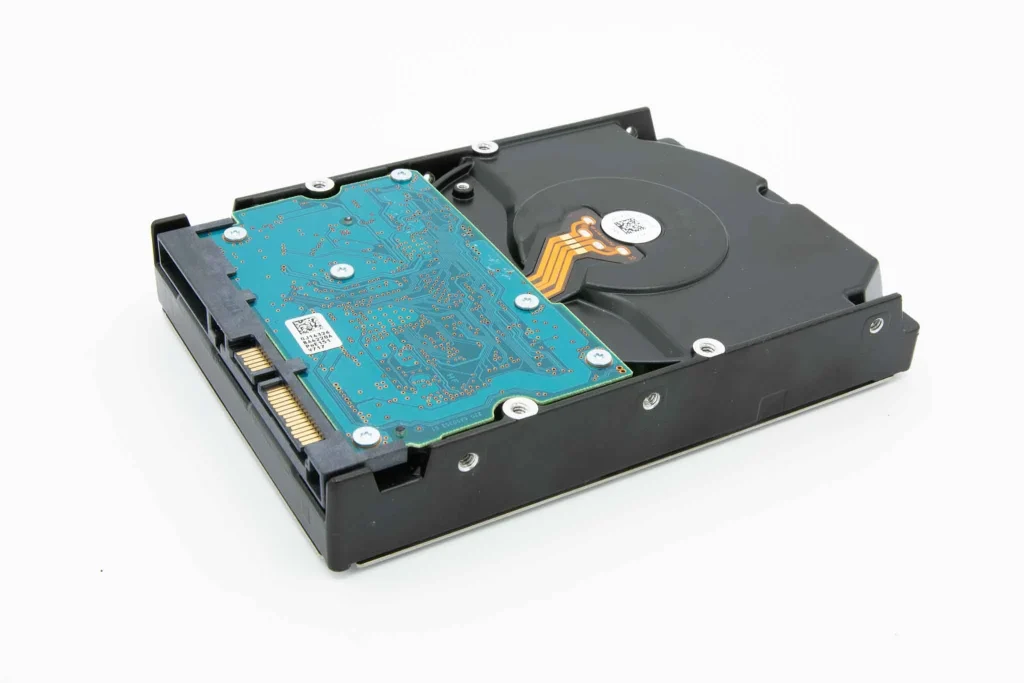
From Gigabytes to Terabytes: 1990s – 2000s
During the 1990s, hard drives capable of storing gigabytes of data made their debut. In 1991, IBM unveiled the 0663 Corsair, marking the emergence of the first hard drive with a capacity exceeding 1GB. By the close of the decade, hard drives offering storage capacities of 10GB had become readily accessible.
As we entered the new millennium, hard drives capable of storing terabytes of data took center stage. In 2007, Hitachi introduced the pioneering Deskstar 7K1000, the world’s first 1TB hard drive.
Contemporary Period: 2010s – Present
In the current era, hard drives have undergone a transformation, becoming more compact, swifter, and capable of accommodating vast data volumes. Additionally, solid-state drives (SSDs), characterized by their absence of moving parts and utilization of flash memory for storage, have gained prominence due to their speed and reliability.
While cloud storage and network-attached storage (NAS) solutions are increasingly prevalent, hard drives remain an indispensable element within most computer systems, serving as either primary or backup storage devices.
The narrative of hard drives development constitutes a chronicle of perpetual innovation and progress, mirroring the broader evolution of computing technology.
Comprehending Hard Drive Operations
The hard drive, often likened to the computer’s “central hub,” stores the entirety of your system’s data, encompassing the operating system, software applications, and individual files.
Hard drive functionality hinges on the principle of magnetism. Within the hard drive enclosure lie one or more platters coated with a thin magnetic layer. Data is recorded by manipulating the magnetic fields on these platters, which spin at high speeds, varying from 5400 to 7200 revolutions per minute in consumer devices and even faster in enterprise-grade drives.
A read/write head, affixed to an arm, hovers just above the spinning platter surface. When you access a file, the read/write head moves to the file’s location, reading the data as the platter rotates beneath it. Similarly, when saving a file, the read/write head places data bits onto the platter.
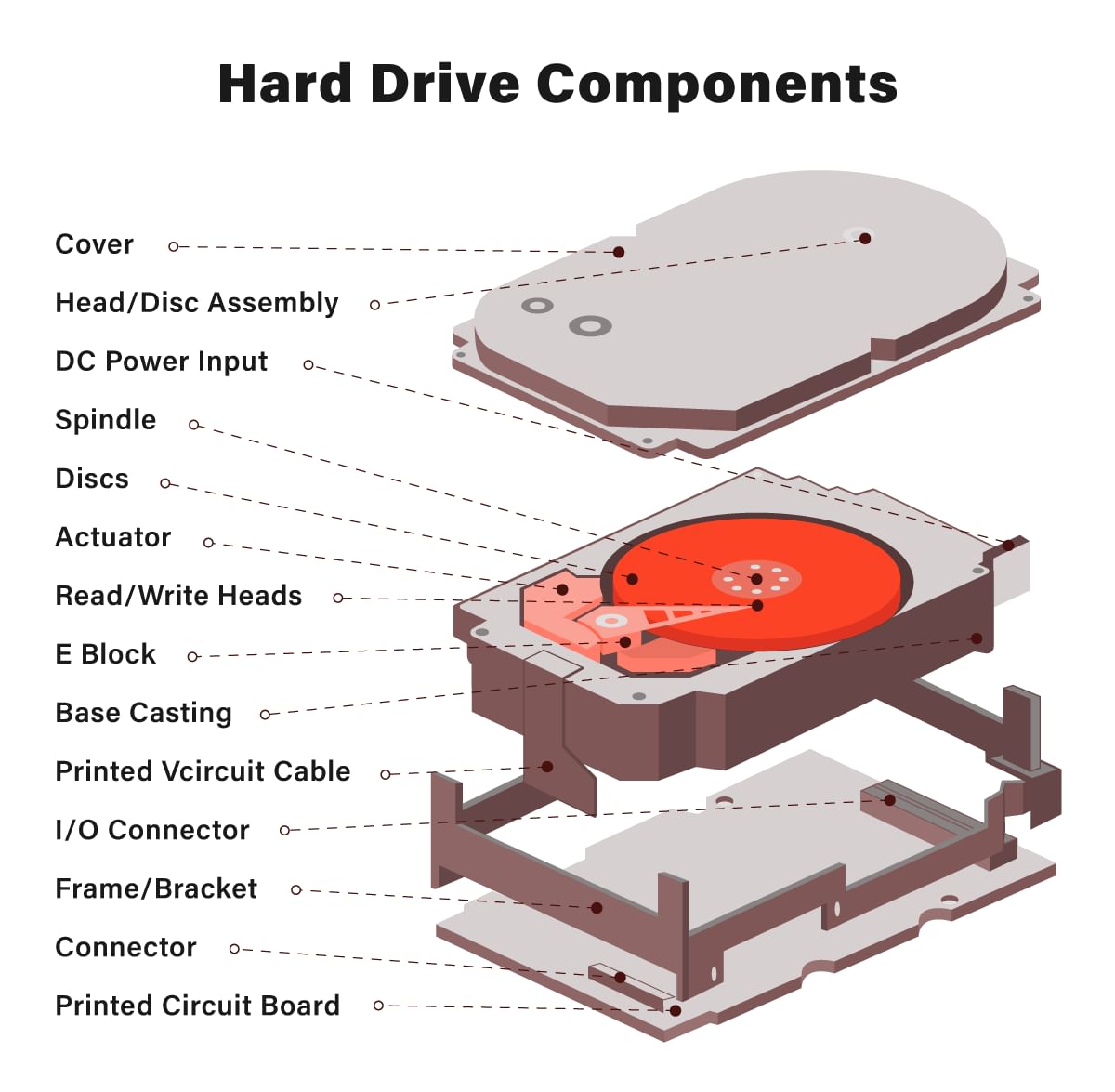
Elements of a Hard Drive and Their Functions
Each hard drive, whether internal or external, comprises various essential components that collaborate to store and retrieve data. Below are the primary components of a hard drive and their respective functions:
Platters
Platters are circular disks within a hard disk drive (HDD) that physically house data. Constructed from sturdy materials, typically aluminum or glass, they are coated with a thin layer of magnetic material. These platters are partitioned into countless minuscule regions, capable of being magnetized to represent a ‘1’ or demagnetized to represent a ‘0’. This binary data constitutes all the files and software on your computer.
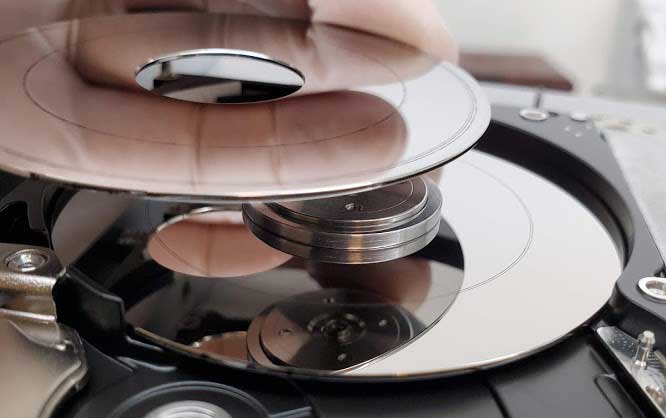
Read/Write Heads
The read/write heads are tasked with the responsibility of both data retrieval from and data recording onto the platters. Within a hard disk drive, they hover just above the rotating platter surface, sustained by a minute cushion of air—measuring less than the width of a human hair.

When a file is saved, the write head alters the magnetization of the platter areas to encode your file’s binary data. Conversely, when you open a file, the read head identifies these magnetic fields and translates them back into binary data comprehensible to your computer.
Spindle and Spindle Motor
The spindle serves as the stabilizer for the platters, while the spindle motor imparts a consistent rotation to them. The rotation speed, ranging from 5400 to 15000 revolutions per minute, is contingent upon the drive’s specifications.
The spindle motor’s speed can influence drive performance—faster platter rotation translates to swifter read/write head data access.
Actuator Arm and Actuator Axis
The actuator arm, housing the read/write heads, manoeuvres them across the platter surface to the precise location for data read or write tasks. The actuator axis serves as the pivotal point around which the actuator arm swings. The actuator mechanism, following directives from the drive’s controller, orchestrates the exact motion of the actuator arm.
Controller
The controller functions as the central processing unit of the hard drive. It interprets commands from your computer, governs the read/write head and spindle motor movements, and oversees error correction procedures within the drive.
Cache
The cache constitutes a small quantity of high-speed volatile memory used for the temporary storage of frequently accessed data. When data is requested from the hard drive, the controller first verifies if the data resides in the cache. If present, the data can be swiftly transmitted to your computer considerably faster than if retrieved from the platters or flash memory chips. The cache’s size can impact drive performance, with larger caches typically yielding enhanced performance.
Connectors
Lastly, the connectors facilitate communication between the hard drive and your computer. Power connectors deliver electrical power to the drive, while data connectors facilitate the transfer of data between the drive and your computer.
The specific data connector employed is contingent upon the drive’s interface, which may encompass IDE, SATA, SCSI, SAS, or NVMe.
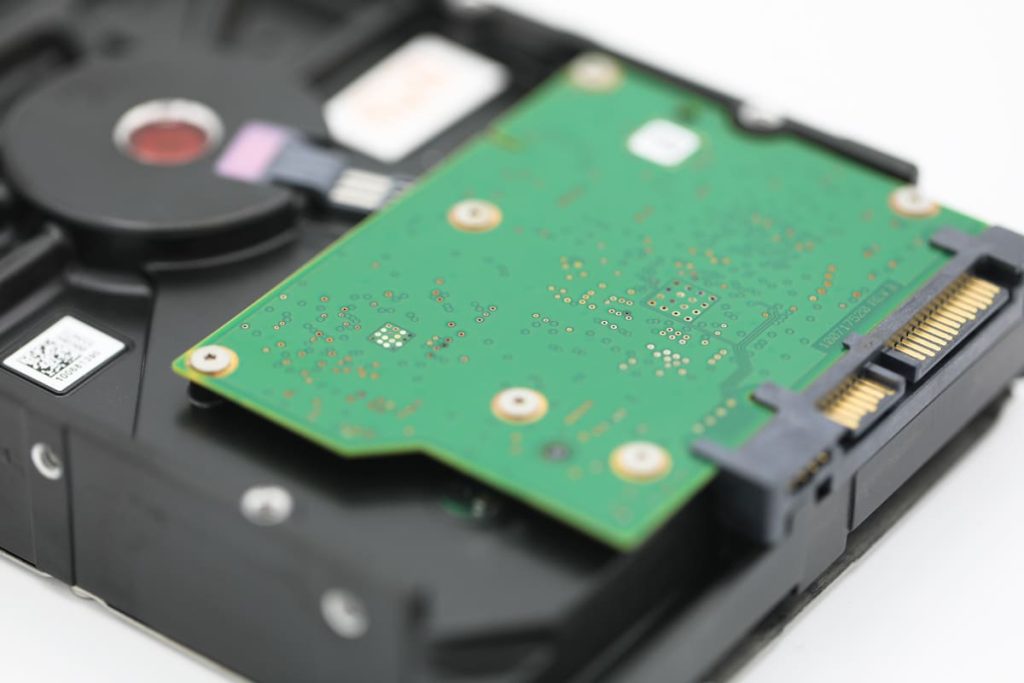
Each of these elements fulfils a vital function in the hard drive’s operation. They collaborate to securely store your data and swiftly retrieve it as required. Acquiring knowledge of these components can foster an appreciation for the intricate and precise technology sustaining your digital realm.
Diverse Hard Drive Interfaces
The interface of a hard drive signifies its mode of communication with the computer. Over time, various interface standards have emerged.
IDE (Integrated Drive Electronics): An older interface, prevalent in the 1990s and early 2000s, largely supplanted by SATA in contemporary computers.
SATA (Serial ATA): Presently, the predominant interface for desktop and laptop hard drives, offering superior data transfer rates compared to IDE and employing a more streamlined cable.
SCSI (Small Computer System Interface): Commonly found in servers and high-performance workstations, known for its speed and reliability but comes at a higher cost than IDE or SATA drives.
SAS (Serial Attached SCSI): An evolution of SCSI, utilising the same interface as SATA while introducing enterprise-specific features. Typically used in servers and high-end workstations.
NVMe (Non-Volatile Memory Express): A modern interface tailored for SSDs, directly connecting to the computer’s PCIe bus, enabling significantly faster data transfer rates than SATA or SAS.
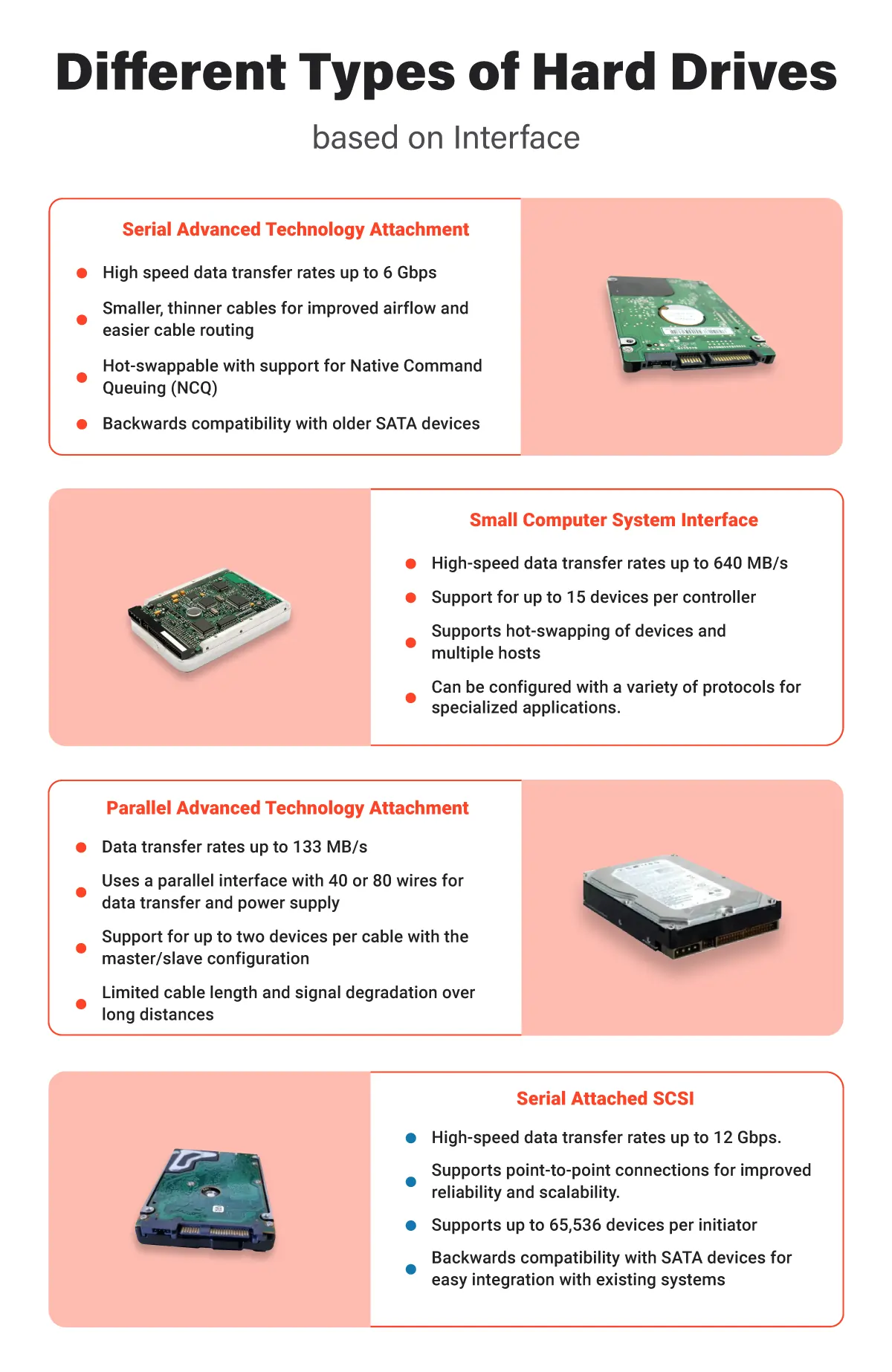
Types of Hard Drives: Internal and External
Internal Hard Drives
Internal hard drives reside within the core of your computer, functioning as the primary storage medium. Among these, hard disk drives (HDDs) is the conventional and widely utilised choice.
HDDs employ mechanical processes for data read and write operations, representing a fusion of technology and machinery. They hold a pivotal role in shaping your system’s performance.
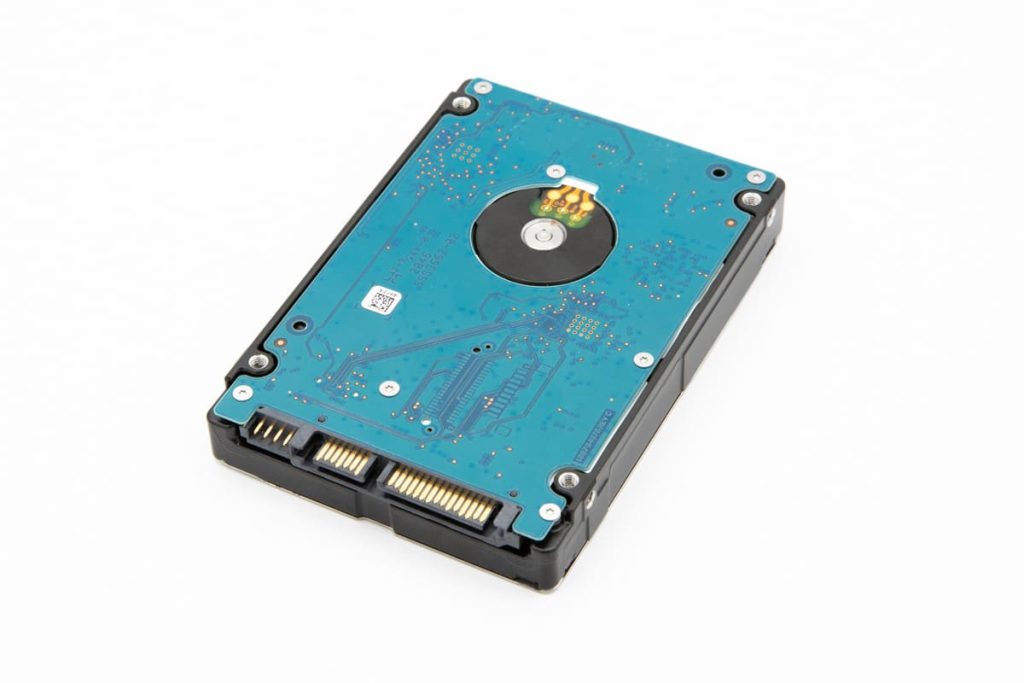
The primary role of an HDD is to store all the data on your computer, encompassing the operating system, software applications, files, and directories. Every document saved or application installed consumes the storage capacity of your HDD.
HDDs are renowned for their expansive storage capabilities, offering considerable space at cost-effective rates. They can amass terabytes of data, catering to users with extensive storage requirements.
External Hard Drives
External hard drives serve as portable storage solutions, connecting to your computer externally via interfaces such as USB or eSATA. Their functionality mirrors that of internal hard drives, with the added advantage of mobility.
External HDDs provide a convenient means to backup data, transfer files between computers, or augment your system’s storage without necessitating the opening of your computer case.
These drives excel in safeguarding essential data by creating backups, thereby mitigating potential data loss scenarios. They also prove invaluable when transporting substantial data volumes from one location to another.
The primary distinction between internal and portable devices lies in their utility. Internal drives serve as permanent storage integrated within your computer, whereas external drives offer a versatile, portable solution. Both, however, play pivotal roles in data storage, enhancing the convenience of computing.
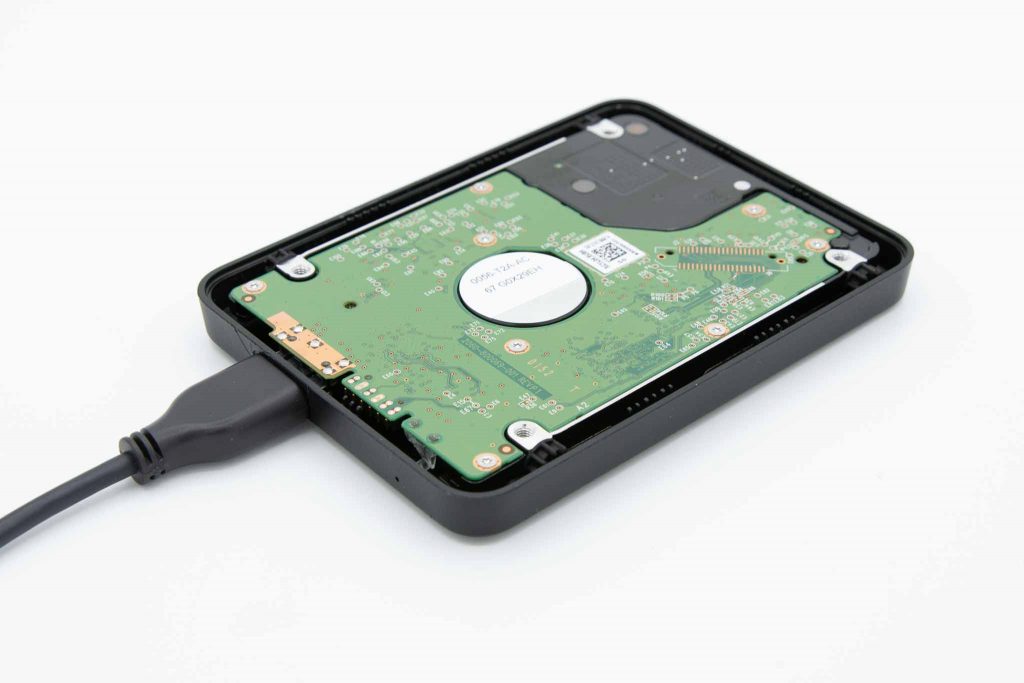
Applications of Hard Drives
Hard drives find extensive utility across a diverse array of devices and systems. Personal computers and laptops integrate hard drives for housing the operating system, applications, and user data. Servers, whether within corporate settings or data centers operated by entities like Google and Amazon, employ hard drives to amass substantial data volumes.
Hard drives also feature in numerous other apparatuses. Digital video recorders (DVRs) utilise hard drives to store television programmes and films. Video game consoles, such as PlayStation and Xbox, rely on hard drives for game storage and saving data.
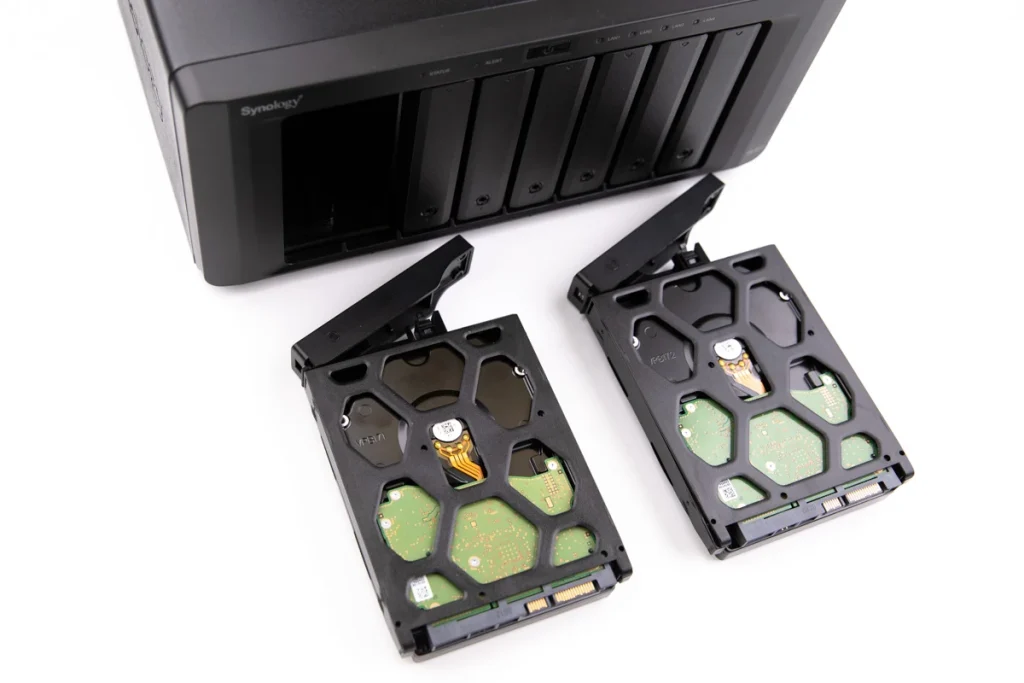
Even high-end digital cameras and music players incorporate miniature hard drives to accommodate photographs and music tracks.
Within business and enterprise domains, hard drives serve within NAS (Network-Attached Storage) devices and SAN (Storage Area Network) systems, providing communal storage for computer networks. They play pivotal roles in surveillance systems for video footage storage, in scientific research for housing extensive datasets, and in medical imaging equipment for storing patient scans.
Data Loss Scenarios
Despite their ubiquity and significance, hard drives remain susceptible to data loss, stemming from a range of factors encompassing both physical and logical origins.
Physical harm to a hard drive can manifest from incidents such as drops, power surges, or extended usage wear and tear. Such physical damage often manifests as atypical sounds, like clicking or grinding, which may elude computer detection.
Logical errors represent another prevalent cause of data loss. These errors encompass unintentional file deletion, hard drive formatting, file system corruption, and the intrusion of viruses or malware. In these scenarios, data on the hard drive typically remains intact, yet accessibility is hindered due to issues with the drive’s logical framework.
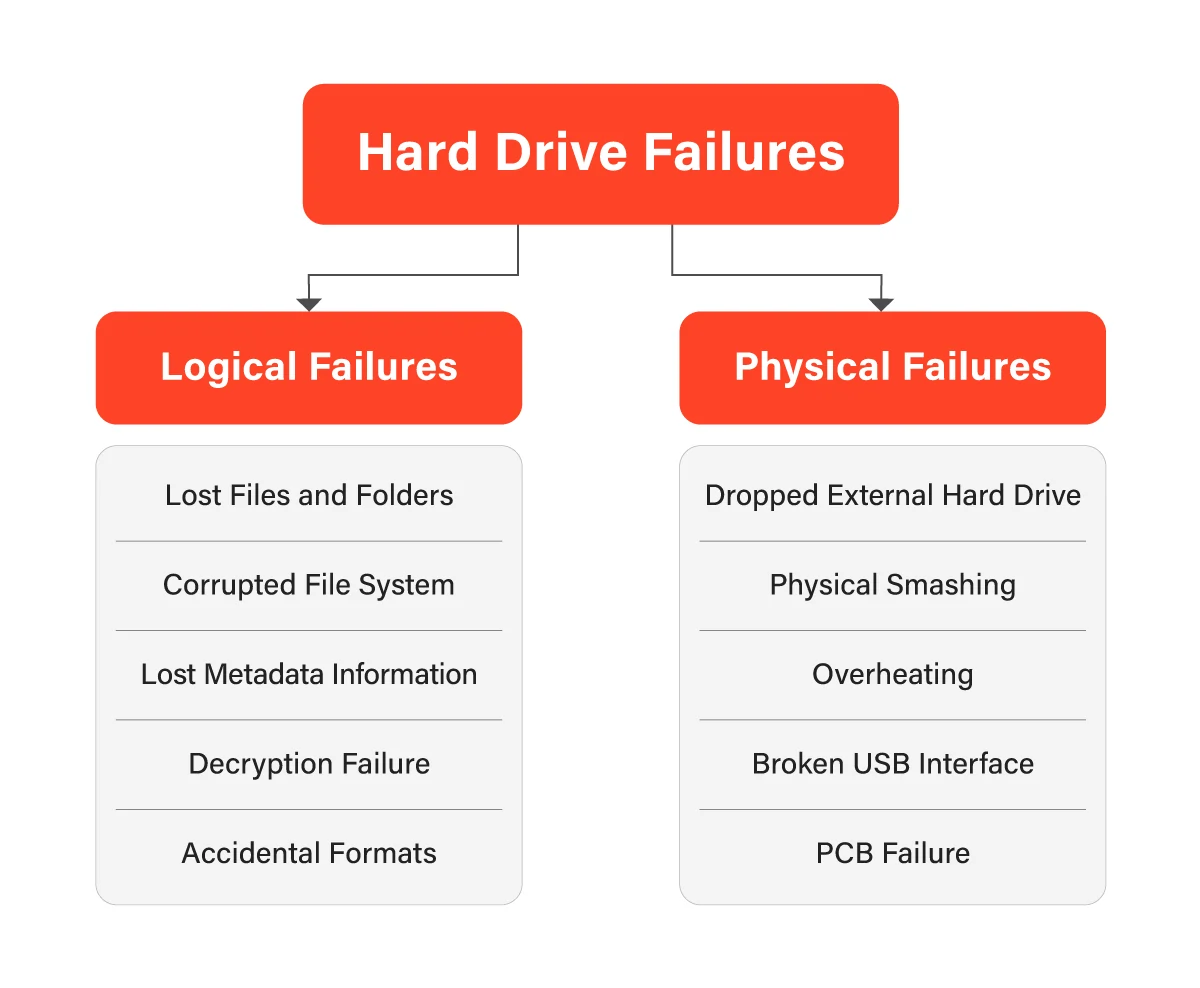
In the event of data loss, it is imperative not to panic or engage in actions that could exacerbate the situation by potentially harming the drive or overwriting lost data. Instead, it is advisable to seek professional assistance from a data recovery service. Firms such as PITS Global Data Recovery Services specialise in retrieving data from impaired or malfunctioning hard drives. We possess the requisite tools and expertise to safely restore your data and reinstate your operational status.
Hard drives hold a pivotal role in the digital era, having undergone substantial evolution over the years, maintaining their status as a critical component in our computing apparatus. These storage drives are instrumental in the functioning of our digital realm. As technology continues to advance, the future of data storage promises excitement and innovative developments.
PITS Global Data Recovery Services: Experts in Hard Drive Retrieval
PITS Global Data Recovery Services stands as a trusted provider of data recovery solutions, encompassing hard drives, servers, RAIDs, and solid-state drives. Leveraging extensive expertise and cutting-edge tools, we serve a global clientele, assisting them in the retrieval of precious data lost under diverse circumstances.
A pivotal element in our hard drive data recovery process is our operation within a cleanroom environment.
The Significance of a Cleanroom in Hard Drive Retrieval
A cleanroom is a controlled setting characterised by minimal contaminants, including dust, airborne microbes, aerosol particles, and chemical vapours. This environment assumes paramount importance when handling hard drives, given the delicate nature of their constituents.
Hard drives comprise platters for data storage and read/write heads for data access. During operation, these heads hover just nanometers above the platter surface.
The presence of dust or debris can lead to head crashes, resulting in additional damage and potentially rendering data recovery more challenging or impossible.
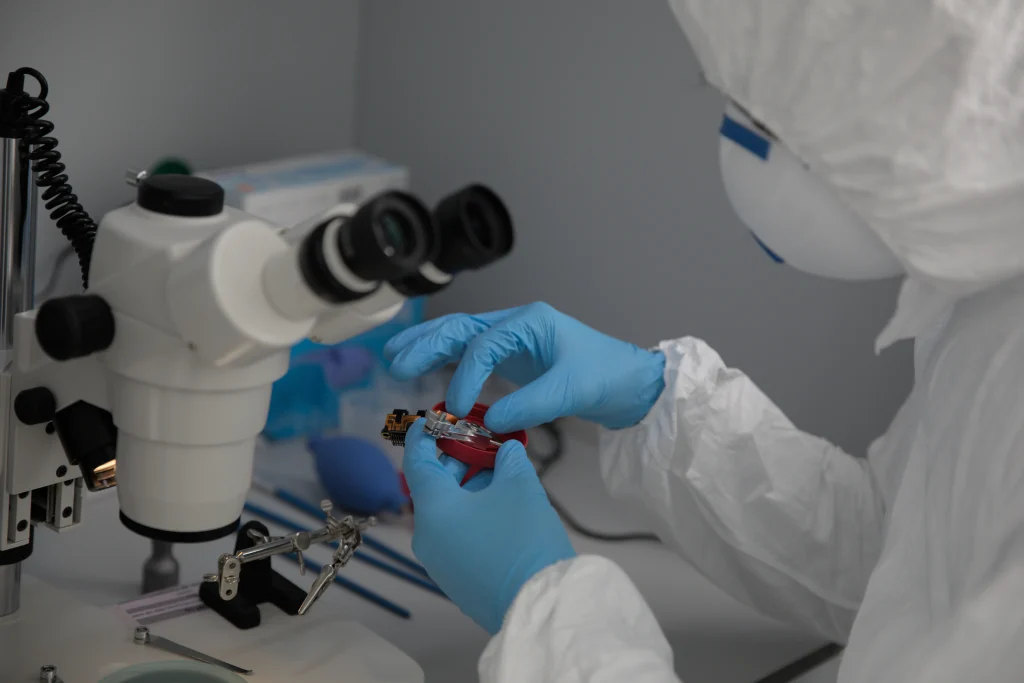
At PITS Global Data Recovery Services, we recognise the vital role of a cleanroom in the data recovery process. Therefore, all our hard drive recoveries adhere to ISO standards to ensure a clean and safe environment. This minimises further damage, enhancing the prospects of successful data recovery.
Our technicians possess the requisite skills to operate in this specialised setting, utilising its advantages for intricate procedures, even on severely damaged drives. Whether dealing with logical, mechanical, or severe physical failures, our team is well-equipped.
Beyond technical proficiency, we place great emphasis on customer service, promoting transparency and ethical conduct. We provide clients with transparent, upfront pricing and maintain open communication throughout the recovery process.
PITS Global Data Recovery Services combines advanced technology, expert knowledge, and unwavering commitment to deliver premium data recovery solutions, recognizing the value of your data and our dedication to assisting you in its retrieval.
Concluding Our Exploration of Hard Drives
As we conclude our exploration of hard drives, it’s evident that these essential components transcend mere storage devices. They symbolize technology’s relentless advancement, diminishing in size while exponentially increasing in capacity over the decades.
From the inception of the IBM 350 Disk Storage Unit to today’s multi-terabyte powerhouses and swift HDDs, hard drives have persistently adapted to meet escalating data storage demands. Looking forward, with innovations like heat-assisted magnetic recording (HAMR) and solid-state hybrid drives (SSHDs), it’s clear that the evolution of hard drives is ongoing.
We trust this blog has deepened your comprehension of hard drives, spanning their history, functionality, and significance in our digital landscape. In an era where data generation and dependence are paramount, acknowledging the integral role of the modest hard drive is imperative.
Every click, file, and digital facet of our lives finds a home within these technological wonders. Stay connected for more enlightening journeys into the realm of technology!
Frequently Asked Questions
What is a hard drive?
A hard drive, also referred to as a hard disk drive (HDD), serves as a data storage device employed in laptops and desktop computers, utilising magnetic storage for data storage and retrieval.
How does a hard drive work?
A hard drive stores data on thin, circular platters coated with magnetic material. Data is written or read by a ‘head’ moving across these rotating platters, akin to a needle on a record player.
How is data stored on a hard drive?
Data is stored in binary format on a hard drive, represented magnetically with differing polarities corresponding to 0 or 1.
What is the typical lifespan of a hard drive?
The lifespan of a hard drive varies depending on factors like drive quality, usage, and environmental conditions. On average, under normal use, a hard drive can endure from 3 to 5 years.
How can I maintain my hard drive?
Regularly backing up data, ensuring a clean and cool computer environment, and conducting periodic disk checks contribute to hard drive maintenance and overall health.
What is an external hard drive?
An external hard drive is a portable storage device that connects to a computer via USB or wirelessly. They are commonly employed for data backups or transferring data between computers.
What does the future hold for hard drives?
The future of hard drives is expected to involve continuous enhancements in storage capacity and speed. Technologies like heat-assisted magnetic recording (HAMR) and solid-state hybrid drives (SSHDs) may shape the trajectory of hard drive development while cloud-based storage solutions gain increasing popularity.
